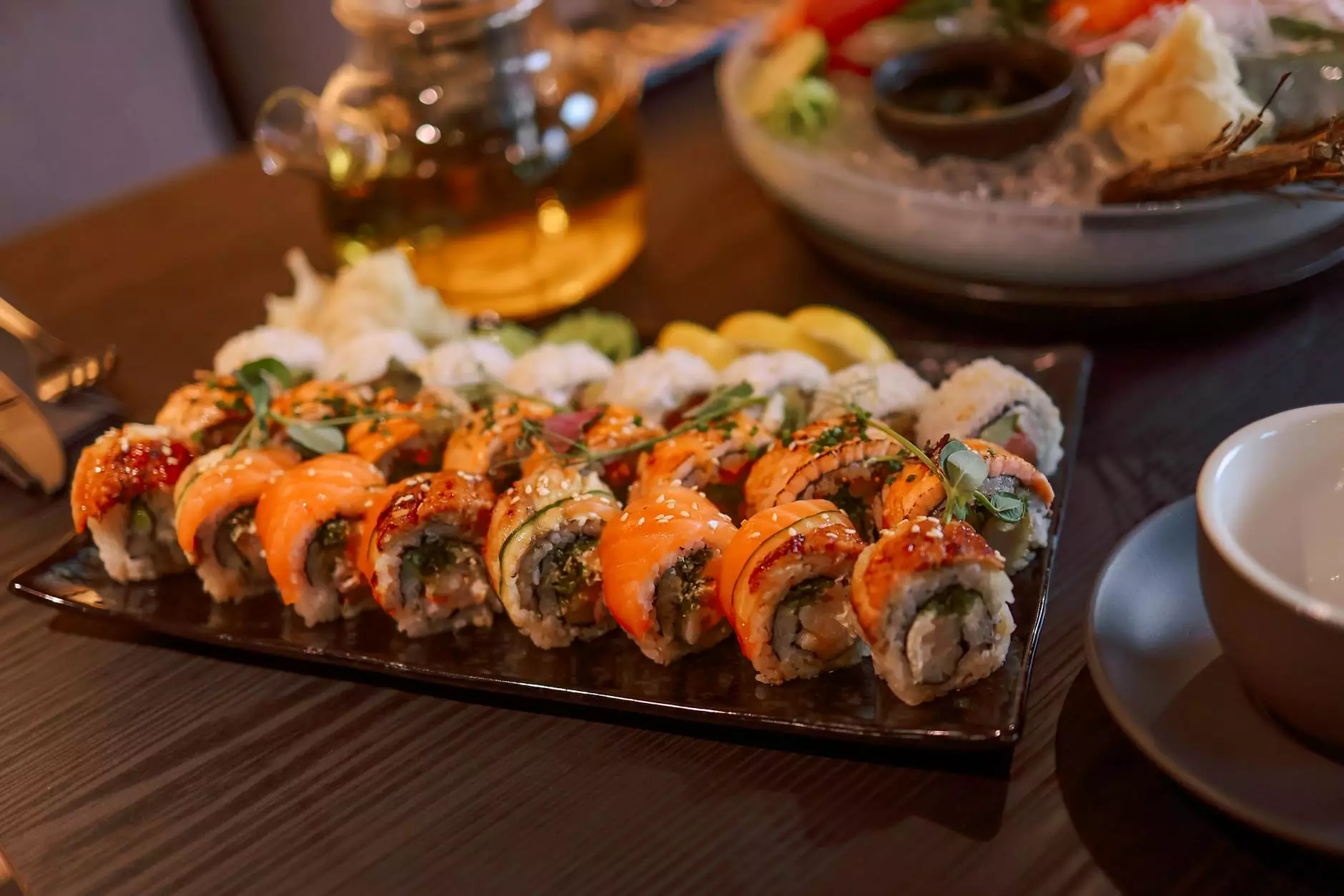The Art and Importance of Fresh Wasabi in Japanese Cuisine

When you think of Japanese cuisine, vibrant flavors and exquisite presentations come to mind. One ingredient that plays a pivotal role in this culinary art is fresh wasabi. This unique root, often confused with the more common imitation paste found in many sushi bars, has a story steeped in tradition, quality, and authenticity. Understanding fresh wasabi not only elevates your dining experience but also connects you more profoundly with Japanese culture.
A Brief Overview of Wasabi
Wasabi, scientifically known as Wasabia japonica, is a plant native to the mountainous regions of Japan. It thrives in cold, running water, making its cultivation quite challenging yet rewarding. Unlike the artificial green paste many are familiar with, real wasabi provides a delicate, complex flavor that is both spicy and aromatic without the overwhelming burn commonly associated with horseradish.
The Difference Between Fresh and Imitation Wasabi
Many sushi enthusiasts are unaware of the substantial differences between real wasabi and imitation wasabi. Here are some key distinctions:
- Ingredient quality: Fresh wasabi is derived from the rhizome of the wasabi plant, while imitation wasabi typically consists of horseradish, mustard, and food coloring.
- Flavor profile: Fresh wasabi has a milder, sweeter, and more sophisticated flavor that complements sushi and sashimi beautifully, whereas imitation wasabi is often harsher and more pungent.
- Nutritional benefits: Fresh wasabi contains health benefits such as antibacterial properties, antioxidants, and anti-inflammatory compounds, making it not just a condiment but also a beneficial addition to a healthy diet.
The Cultivation of Fresh Wasabi
The cultivation of fresh wasabi is an art in itself. It requires specific conditions that mimic its natural habitat. Here’s what you need to know about the growth of this prized plant:
Optimal Growing Conditions
Fresh wasabi needs:
- Cold, running water: The plant thrives in well-drained soil supplemented by a constant flow of cool water, often found in mountainous streams.
- Shade: Wasabi plants prefer a shaded environment, ideally under trees or specific greenhouse settings.
- Patience: It can take up to two years for fresh wasabi to mature, demanding patience and careful nurturing from farmers.
Harvesting Fresh Wasabi
Harvesting is crucial in preserving the unique flavor profile of wasabi. Typically, only the rhizome is harvested, and care must be taken to avoid damaging the delicate roots. This is why fresh wasabi is a premium product often limited in availability.
The Culinary Use of Fresh Wasabi
In Japanese cuisine, the introduction of fresh wasabi can transform an ordinary dish into an authentic gastronomic experience. Here are some cultural insights and culinary uses:
Pairing Fresh Wasabi with Sushi
When served with sushi and sashimi, fresh wasabi enhances the natural flavors of the fish, allowing for a more well-rounded taste. Additionally, it can help cleanse the palate between different types of sushi:
- Raw Fish Dishes: The milder spiciness of fresh wasabi complements the delicate flavors of fish without overpowering them.
- Sushi Rolls: For rolls, a smear of fresh wasabi can elevate the entire experience, especially when combined with soy sauce.
- Grilled Foods: Fresh wasabi can also be used alongside grilled fish, where its aromatic properties enhance the dish.
A Culinary Tradition
The preparation and serving of fresh wasabi is steeped in tradition. In high-end restaurants, the rhizome is often freshly grated on a sharkskin grater, which preserves the delicate flavor profile while providing a unique texture. This method is essential to ensure that the wasabi retains its aromatic and flavor characteristics.
Health Benefits of Fresh Wasabi
Beyond its culinary uses, fresh wasabi is enriched with numerous health advantages, making it a secret superfood in Japanese cuisine:
- Antimicrobial properties: The compounds found in fresh wasabi can help eliminate bacteria, especially when consumed with raw fish.
- Rich in antioxidants: Fresh wasabi is packed with antioxidants, which combat oxidative stress and inflammation in the body.
- Aids digestion: Including fresh wasabi in your meals can promote better digestion, thanks to its natural compounds.
Choosing and Storing Fresh Wasabi
Choosing quality fresh wasabi can significantly impact your culinary experience. Here’s how to select the best:
How to Choose Fresh Wasabi
When selecting fresh wasabi, look for:
- Firm texture: The rhizome should feel hard and firm, not soft or shriveled.
- Vibrant color: Fresh wasabi will have a bright green hue.
- Aromatic scent: It should emit a pleasant, fresh fragrance, not a pungent or overpowering smell.
Storing Fresh Wasabi
To maintain its unique flavor and health benefits, fresh wasabi should be stored appropriately:
- Refrigeration: Keep fresh wasabi wrapped in a damp paper towel and stored in a plastic bag in the refrigerator.
- Freezing options: If you need to preserve fresh wasabi for longer, consider grating and freezing it, although the flavor may slightly alter.
Fresh Wasabi in Restaurants and Sushi Bars
High-end sushi restaurants are known for their dedication to authenticity, and fresh wasabi undoubtedly plays a key role in this authenticity. Here’s how:
The Role of Fresh Wasabi in Restaurant Culture
In many upscale sushi bars and Japanese restaurants, fresh wasabi signals quality and attention to detail. It demonstrates the chef's commitment to providing an authentic dining experience that respects traditional practices:
- Signature Dishes: Some restaurants create signature dishes that highlight fresh wasabi, allowing patrons to experience its unique flavor.
- Customer Education: Many chefs take the time to educate diners about the differences between fresh and imitation wasabi, enhancing their culinary knowledge.
- Flavor Innovation: Progressive chefs experiment with fresh wasabi beyond traditional uses, incorporating it into unique sauces or marinades.
Conclusion: The Future of Fresh Wasabi in Culinary Arts
As diners become more educated and discerning, the demand for authentic ingredients like fresh wasabi will continue to rise. Understanding its origins, health benefits, and culinary significance adds depth to the dining experience. Authentic Japanese cuisine is an art form, and fresh wasabi is a brushstroke that enriches this masterpiece.
At realwasabi.com, we are dedicated to promoting the use of fresh wasabi in our culinary offerings, ensuring that each customer experiences the full richness of traditional Japanese dining. Explore our menu, and allow fresh wasabi to elevate your next meal!



